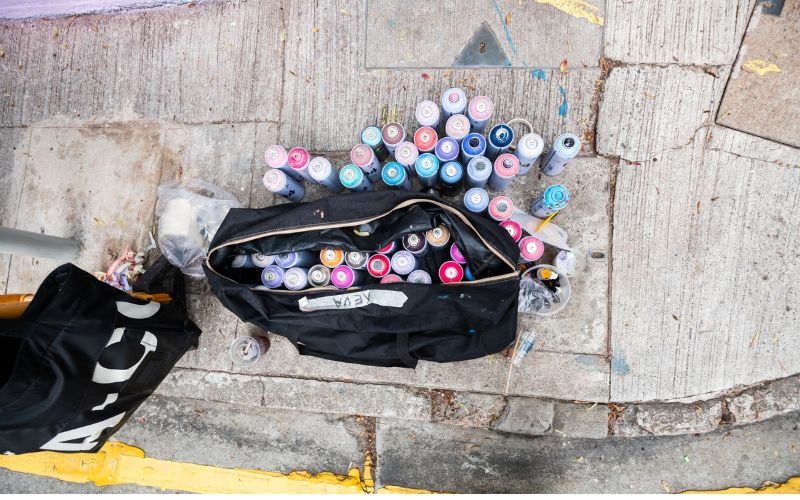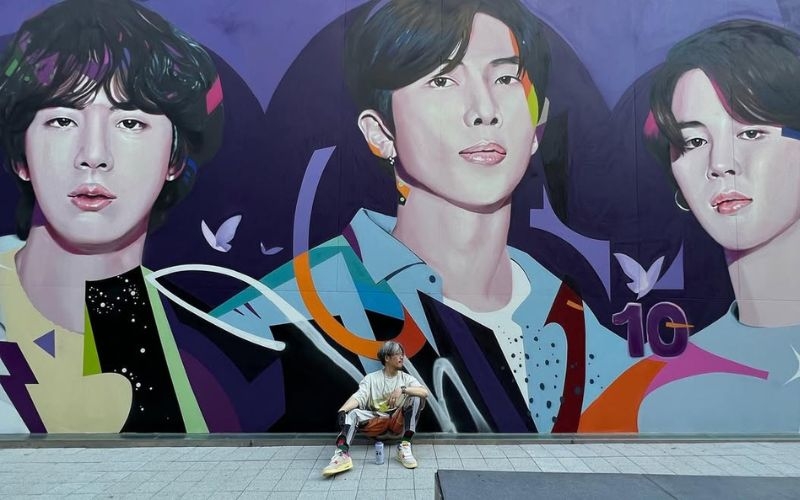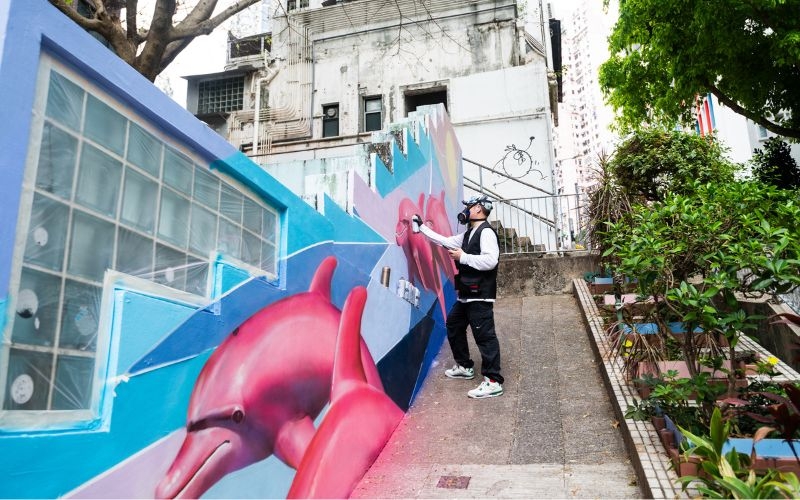- 한국어
- English
- 日本語
- 中文
- العربية
- Español
- Français
- Deutsch
- Pусский
- Tiếng Việt
- Indonesian
By Honorary Reporter Jianne Soriano from Philippines
Photos = HKwalls
Street artist Xeva, the creative force behind the BTS mural completed in 2023 on the Hybe building in Seoul, is a prominent figure in Korea's urban art scene.
Born Yoo Seung-baik in Seoul in 1983, the artist started off in graffiti on the streets of the capital after transitioning from traditional art in 1999. Now based in the Seoul suburb of Gimpo, Gyeonggi Province, he has shown his work at solo and group exhibitions in Korea and abroad.
In March, Yoo returned to Hong Kong's street art festival HKwalls a decade after his debut there in 2015.
The following are excerpts from an email interview with him from April 17 to May 2.

Spray paint is Xeva's medium for street art.
Explain your artist name and your journey in street art.
I've always been drawn to the non-mainstream and the rare, and this is how my name Xeva was born in 1999. I deliberately chose uncommon letters that didn't resemble other graffiti tags and made it easy to sign. Coming from a classical art background starting in elementary school, I was drawn to street art in high school because spray paint felt like the most modern and radical break from traditional art.

Xeva sits in front of his BTS mural on the Hybe building in Seoul's Yongsan-gu District.
How would you describe your artistic style and how has it evolved over the years?
Creativity and originality drive my work. I focus on developing my own visual language through abstract line, faces and forms. My inspiration often comes from sound and physical sensations rather than visual references. While I started on the streets, my practice has evolved toward more refined studio and canvas work, though I maintain my street art roots.

Xeva paints dolphins leaping through the waves, a symbol of joy and intelligence, in the Sheung Wan area of Hong Kong.
How does the art scene differ between Korea and Hong Kong?
HKwalls has grown impressively over the past decade, bridging underground and mainstream art through diverse programming. Hong Kong's scene is more diverse in featuring international artists and various techniques like brush-based murals. While Korean street art continues to improve technically, it hasn't yet achieved the same breadth of diversity, but I'm optimistic about Korean artists' future development during this transitional period.
msjeon22@korea.kr
*This article is written by a Korea.net Honorary Reporter. Our group of Honorary Reporters are from all around the world, and they share with Korea.net their love and passion for all things Korean.